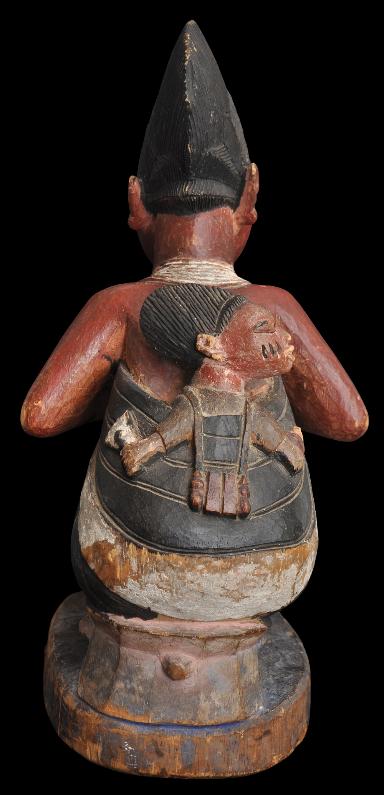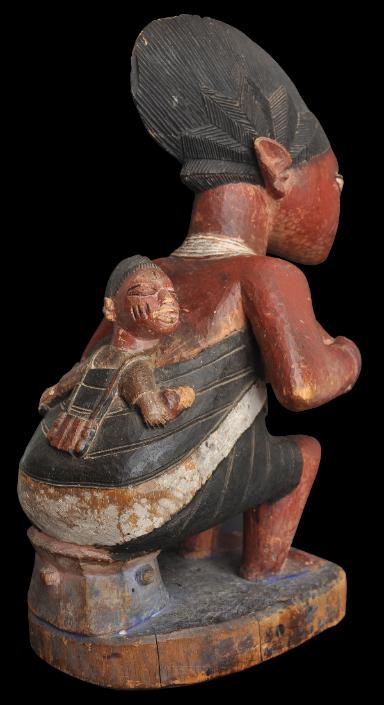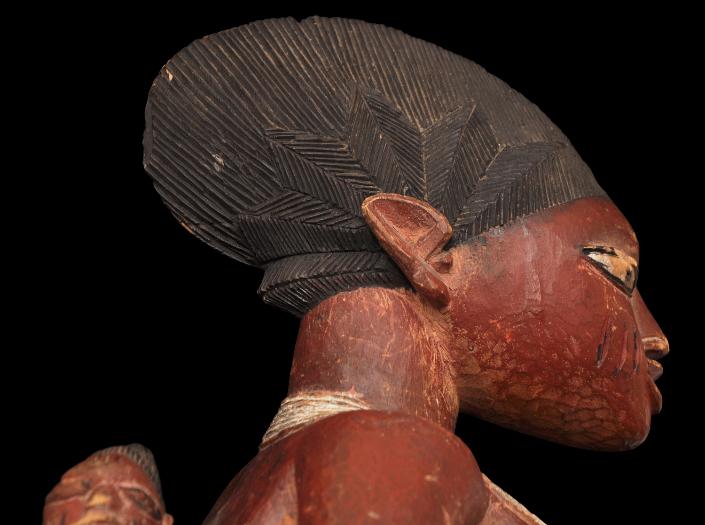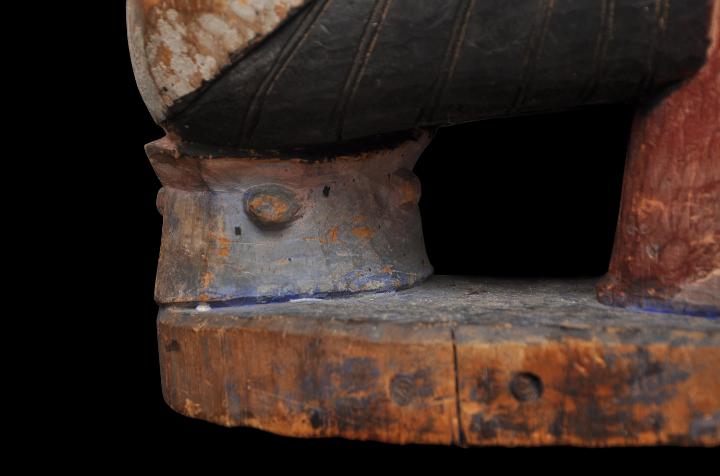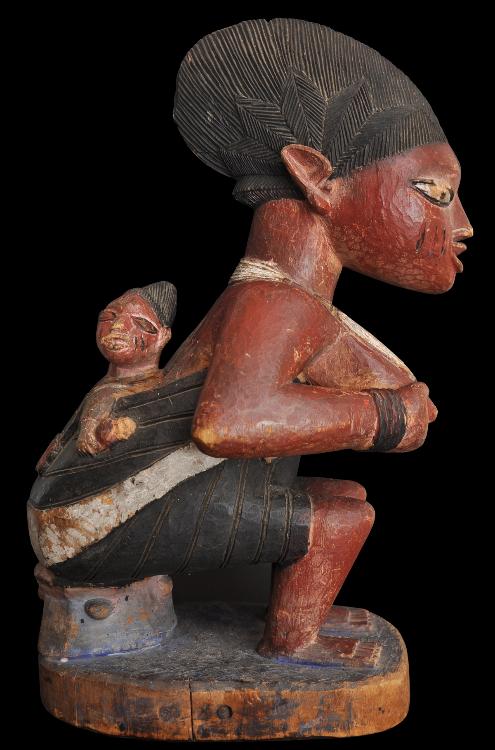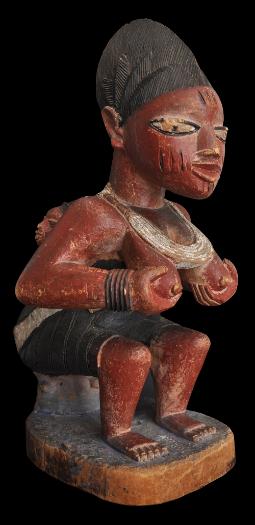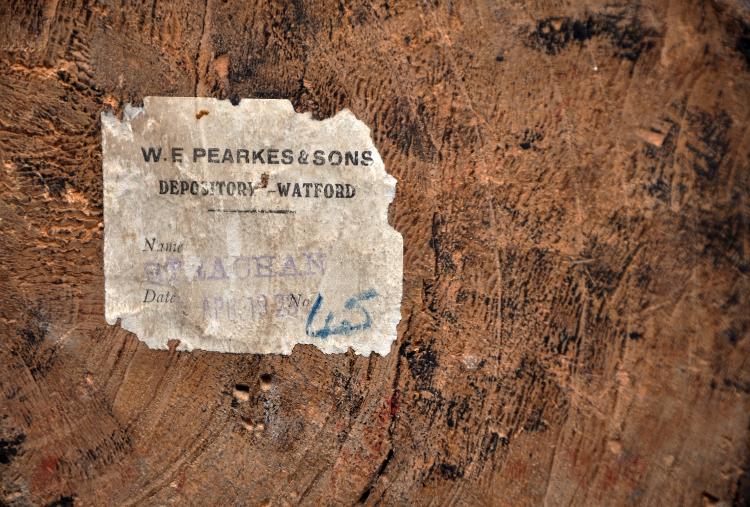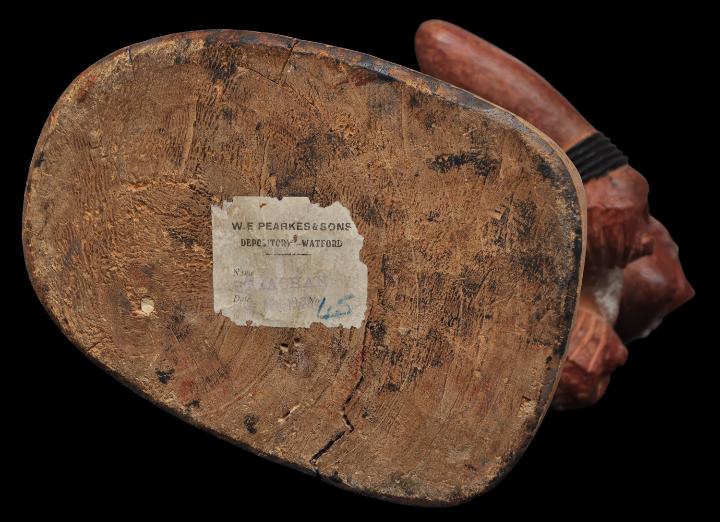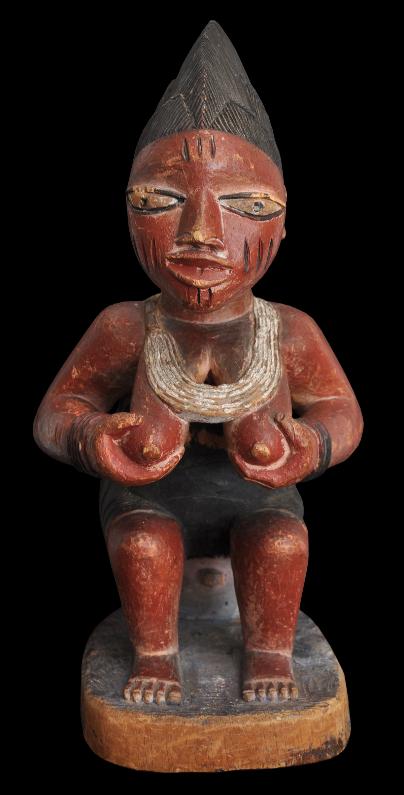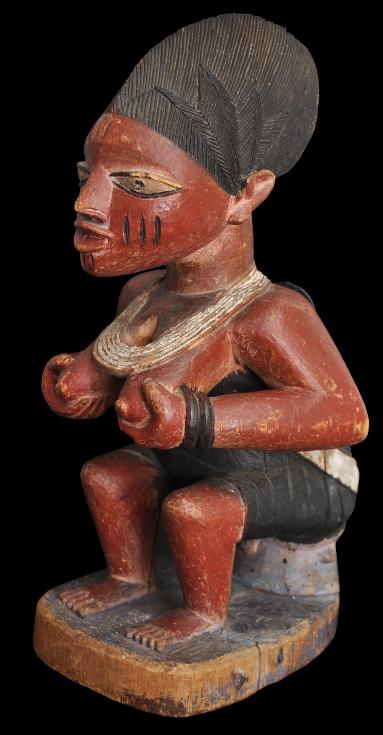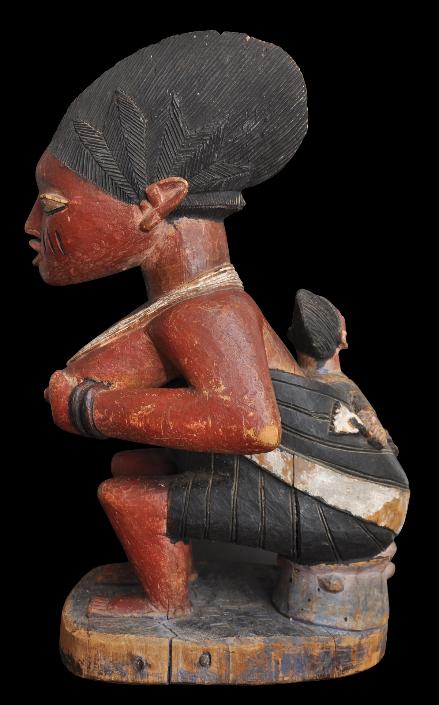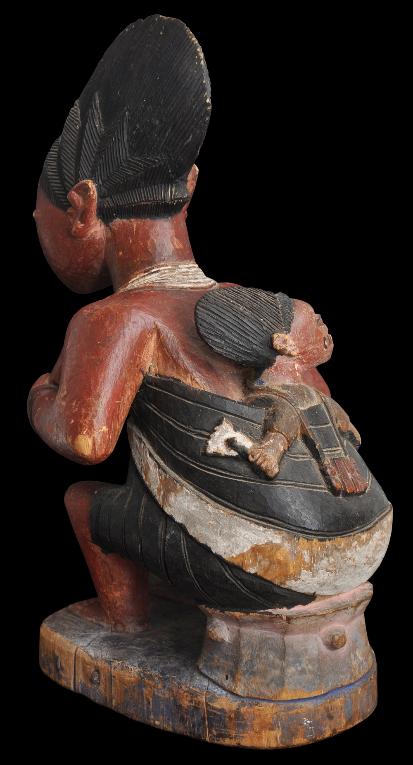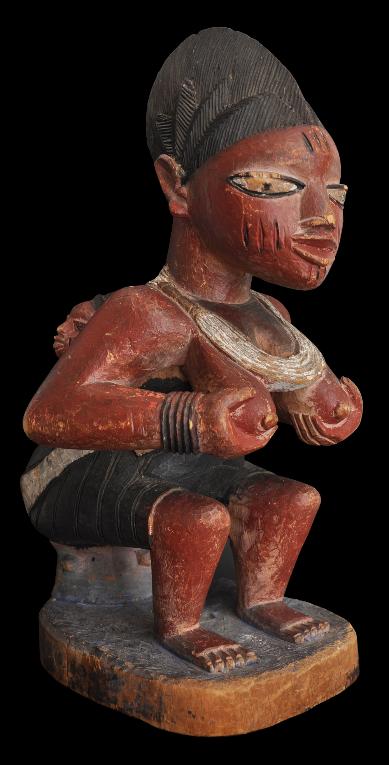Yoruba Maternity Figure
Rare Carved & Polychrome Wood Maternity Figure
Yoruba People, Abeokuta, Egba, Nigeria
before 1923
height: 48cm, width: 18cm, depth: 26cm
Larger Yoruba sculptural works with demonstratable age are relatively rare. This seated maternity figure has clear age with a fine patina and importantly, has an old label affixed to the base indicating that it was held at a UK depository in 1923.The image probably already had age when it was deposited so at least a late 19th century dating for this image is not unreasonable.
The seated, carved from a single piece of light wood, has been brightly painted. It depicts the ideals of beauty and fertility and represents the primordial mother.
The mother figure has almond-shaped eyes, flared nostrils, and question mark-shaped ears aesthetically found in the Abeokuta region of Egba region. Her gaze is intense.
Her lips are full and sensual. Three vertical scarifications are on both cheeks, and on her forehead and chin.
Her headdress is particularly striking: represented by finely incised vertical lines, the raised coiffure resembles a Trojan helmet and is further plaited above each ear in a shape that is not unlike a large star anise segment.
Two black bracelets are on her left wrist and five on the other, and she wears a wide, white-coloured necklace with incised strips. Bracelets often are symbols of devotion to religion in Yoruba carvings.
The figure sits on a low, hour-glass shaped stool decorated around the sides with four nodes. Rekitts Blue is still apparent on the stool.
A baby figure is strapped to the female figure’s back by means of a wide striped cloth – an obvious symbol of maternity and fertility in Yoruba culture. Her full pointy breasts and immense nipples are further indications of great motherhood. She holds her breasts with both of her hands almost aggressively – she is ready for milk feeding.
The baby figure has a textile bag strapped around his neck and which falls down his back. It seems to be a diviner’s bag.
He holds a gun powder flask with his right hand, and what appears to be a fan with his left hand. This might also be a representation of a rare akuaba doll (fertility figure) of the neighbouring Ashanti people.
Overall, this maternity figure conveys a strong sense of strength, motherhood and compassion
It has a number of stylistic traits that hint at an origin in the Abeokuta region of Egba.
Figures like this were used as shrine figures. They were often objects of petitions or prayers for fertility and successful births. The prevalence of the maternity ideals testifies to the importance of women and children to the continuity of society.
This image was stored in the W. E. Pearkes & Sons depository, Watford, Hertfordshire, United Kingdom in April 1923. The depository label attached to the base tells us that it was deposited in the name of ‘Strachan.’
Possibly, the item belonged to the family of the author, linguist and artist Walter John Strachan (1903-1994) who was associated with Hertfordshire. Strachan was a Francophile and a published authority on sculptures. He was the author of
Towards Sculpture: Drawings and Maquettes from Rodin to Oldenburg (1976). And in 2009, the Walter Strachan Art Centre at Bishop’s Stortford College, Hertfordshire, was opened.
A very similar maternity figure in the collection of Dr and Mrs Jeffrey Hammer is illustrated in Robbins & Nooter (1989, p. 242). We are not aware of other published examples.
References
Fagg, W. & Pemberton, J. III., Yoruba: Sculpture of West Africa, Collins, 1982
Polo, F.,
Encyclopedia of the Ibeji, Ibeji Art, 2008.
Robbins, W. M. & N. I. Nooter,
African Art in American Collections, Smithsoian Institution Press, 1989.
Rowland, A., Drewal, H. J. & Pemberton, J. III.,
Yoruba: Art and Aesthetics, Museum Rietberg, Zurich, 1991.
Walker, R. A.,
Olowe of Ise: A Yoruba Sculptor to Kings, National Museum of African Art, 1998.
Provenance
on deposit with the W. E. Pearkes & Sons Depository, Watford, Hertfordshire, United Kingdom in April 1923; and possibly the Walter John Strachan collection, Watford, Hertfordshire of around the same period.
Inventory no.: 1704
SOLD
